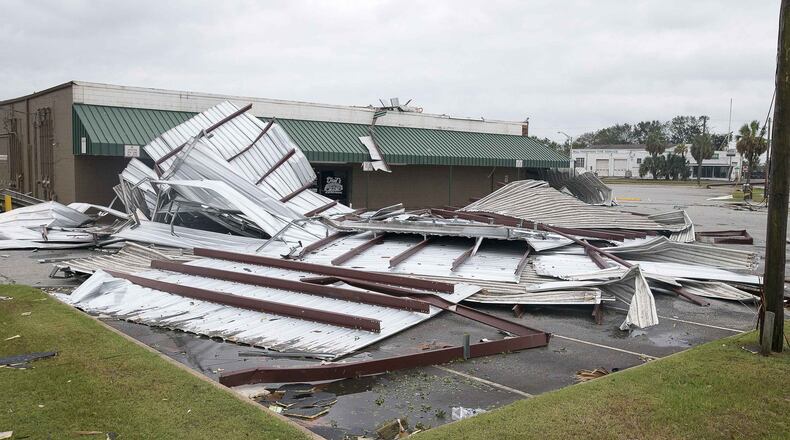As farmers in central and southwest Georgia welcomed fall, many of them expected 2018 to be a good year that yielded a bountiful harvest.
But by Thanksgiving, most were struggling to recover from the devastation of Hurricane Michael. And state and federal agencies were scrambling to step in and offer aid.
The storm that made landfall in the Florida Panhandle last month ended up decimating cotton, pecan, timber and vegetable crops in Georgia. Michael caused an estimated $3 billion in losses to the state’s $73 billion agricultural sector, according to the state’s Department of Agriculture.
“We really had invested in the crop, and to have this type of storm in October, right at the beginning of harvest, certainly impacted producers,” said Andy Lucas, spokesperson for the Georgia Farm Bureau.
Damage from the hurricane is expected to have a far-reaching impact not just on farms, but related businesses such as cotton gins, peanut processors, packers and restaurants that get their produce from farmers. The ripple effects of the hurricane will be felt in years to come, industry experts say.
In response, Gov. Nathan Deal called a special session, where the Georgia Legislature allocated $270 million toward hurricane relief and $200 million in income tax credits to timber and pecan farmers for replanting trees they lost.
Deal and lawmakers said they couldn’t wait until the General Assembly convenes in January to begin providing help to the region.
And grants and low interest disaster loans from the Small Business Administration and the Federal Emergency Management Agency, totaling more than $25 million, have been extended to Georgians affected by the storm.
Even though that aid isn’t aimed specifically at farmers, it will help many of the businesses that producers depend on — and that depend on them — stay operational.
“If we help the small businesses that work with the farmers and are in the community, then we help restore operations in the community and help things go back to the way things were before the disaster occurred,” said Kathy Cook, public affairs specialist at the U.S. Small Business Administration.
“This is the money to help them pay the normal operating expenses that the businesses could have paid if the disaster had not occurred,” said Cook. “It’s going to be a long process of recovery.”
Lucas said affected farmers have not received any federal dollars.
“Our producers need help and need help now, but there has been no federal payments issued,” he said.
Latest data from the Georgia Department of Insurance shows insurance claims as of the end of October nearing $700 million.
Georgia Agriculture Commissioner Gary Black said earlier this month that pecan farmers alone face losses estimated at $600 million. “The pecans are gone. We are the No. 1 pecan-producing state in the nation,” he said, “but we may not be able to say that again for a generation, if ever.”
According to Dun and Bradstreet, a company that provides commercial data and analytics to businesses, approximately 20,314 businesses across 13 counties in the state were affected by the hurricane.
Homer Bryson, director of the Georgia Emergency Management and Homeland Security, said his agency has been “inspired by the resilience of those impacted by Hurricane Michael.”
And, he said, state officials “are committed to ensuring they receive the proper resources to recover as quickly as possible.”
Hurricane Michael Crop Damage Assessment
- Pecans: more than $560 million.
- Cotton: $550 million in lost crop.
- Dairy: Damage assessments still ongoing.
- Vegetables: $480 million.
- Poultry: $25 million in lost birds and houses. 129 commercial chicken houses destroyed, at 36 farm locations.
- Peanuts: About $10 million in lost crop.
- Soybeans: $10 million in lost crop.
- Green industry: $13 million, mostly greenhouses, equipment.
- Damage to farm equipment: $50 million.
- Trees: $763 million worth of downed/damaged timber.
Source: Georgia Department of Agriculture.
About the Author
Keep Reading
The Latest
Featured


